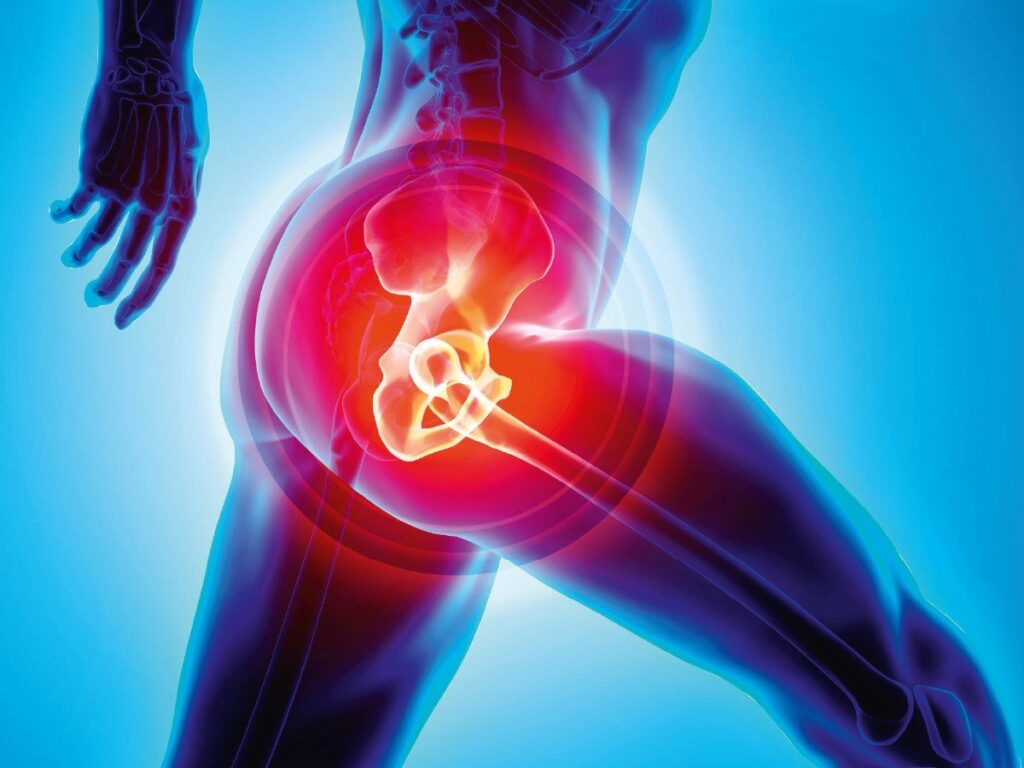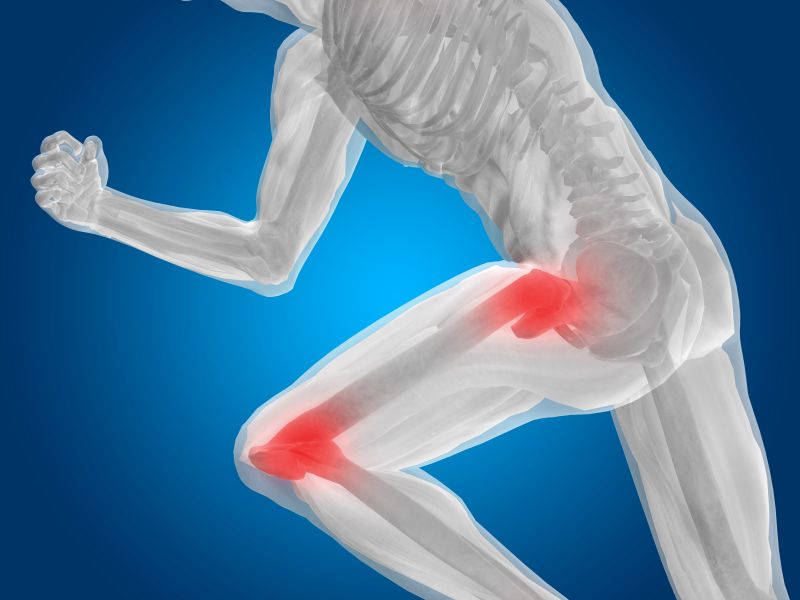Hip replacement surgery is a common procedure to relieve pain and restore mobility in patients with severe hip joint damage. While the surgery itself focuses on the hip, many patients report knee pain after the procedure. This unexpected discomfort can be concerning, but understanding its causes, treatment options, and preventive measures can help you manage it effectively.
In this article, we’ll explore why knee pain occurs after hip replacement surgery, how to relieve it, and when to seek medical attention.
Why Does Knee Pain Occur After Hip Replacement Surgery?

Knee pain after hip replacement can be caused by several factors, including changes in walking patterns, joint stress, nerve irritation, and muscle weakness. Here are the most common reasons:
1. Gait Changes and Muscle Imbalance
- After hip replacement, your walking pattern (gait) may change as your body adjusts to the new hip joint.
- Uneven weight distribution can put extra strain on the knee, leading to pain and discomfort.
- Weak or tight muscles around the hip and knee can contribute to joint stress.
2. Referred Pain from the Hip Joint
- The hip and knee are closely connected through nerves and muscles. Pain from the hip can sometimes radiate to the knee.
- Inflammation or surgical trauma in the hip region may trigger discomfort in the knee.
3. Pre-existing Knee Conditions
- If you already had mild arthritis or joint issues in your knee, hip surgery may make them more noticeable.
- The improved mobility after surgery may increase knee joint movement, worsening underlying conditions like osteoarthritis or meniscus tears.
4. Leg Length Discrepancy
- In some cases, the operated leg may feel slightly longer or shorter after surgery.
- This discrepancy can alter weight-bearing and movement, putting stress on the knee joint.
5. Nerve Irritation or Damage
- During hip surgery, nerves around the hip and thigh may become irritated or compressed.
- This can lead to pain, tingling, or weakness that extends to the knee.
6. Post-Surgical Swelling and Inflammation
- The body’s natural healing response after surgery includes inflammation, which can spread to the knee.
- Fluid buildup and stiffness can make knee movement painful.
7. Overuse or Increased Activity
- After surgery, patients are encouraged to move and exercise for recovery.
- However, doing too much too soon can strain the knee joint and cause pain.
How to Relieve Knee Pain After Hip Replacement
Managing knee pain effectively can help improve mobility and overall recovery. Here are the best ways to relieve discomfort:
1. Physical Therapy and Rehabilitation
- Strengthening exercises for the quadriceps, hamstrings, and glutes help support the knee and hip.
- Balance and flexibility exercises improve walking patterns and reduce knee stress.
2. Ice and Heat Therapy
- Apply ice packs to reduce swelling and numb pain (15–20 minutes at a time).
- Use heat therapy, like warm compresses, to relax muscles and improve blood flow.
3. Proper Walking Aids and Footwear
- Use a cane or walker as needed to reduce strain on the knee.
- Wear supportive shoes with cushioning to improve stability and shock absorption.
4. Pain Management Medications
- Over-the-counter NSAIDs (ibuprofen, naproxen) can reduce inflammation and pain.
- Topical pain relief creams or patches may help with localized discomfort.
5. Improve Posture and Walking Mechanics
- Work with a physical therapist to correct any gait abnormalities.
- Focus on maintaining good posture to distribute weight evenly and reduce knee stress.
Also Read: Throbbing Knee And Ankle Pain – Causes, Treatment & Prevention!
6. Knee Braces or Compression Sleeves
- Wearing a knee brace can provide extra stability and relieve pressure on the joint.
- Compression sleeves help reduce swelling and improve circulation.
7. Gradual Increase in Activity
- Avoid overloading the knee with sudden increases in activity.
- Follow a structured rehabilitation plan to build strength and endurance safely.
When to See a Doctor
While mild knee pain after hip replacement is common, certain symptoms may indicate a more serious issue. Seek medical attention if you experience:
- Severe or worsening knee pain that does not improve with rest.
- Swelling, redness, or warmth around the knee, which may indicate an infection.
- Difficulty walking, bearing weight, or increased joint instability.
- Numbness, tingling, or shooting pain in the knee or leg.
Your doctor may recommend imaging tests like X-rays or MRIs to assess any underlying knee conditions.
How to Prevent Knee Pain After Hip Replacement
Preventing knee pain starts with proper post-surgical care and healthy movement habits. Here’s what you can do:
- Follow your physical therapy program to strengthen muscles and improve mobility.
- Use proper walking aids to prevent excess stress on the knee.
- Maintain a healthy weight to reduce joint pressure.
- Stay active with low-impact exercises like swimming or cycling.
- Wear supportive footwear to promote proper alignment and reduce joint strain.
FAQ’s
1. Is knee pain normal after hip replacement surgery?
Yes, mild to moderate knee pain is common after hip replacement surgery. It can occur due to changes in walking patterns, muscle imbalances, or referred pain from the hip.
2. How long does knee pain last after hip replacement?
Knee pain usually improves within a few weeks to months as the body adjusts to the new hip joint. However, if pain persists or worsens, consult your doctor.
3. Can physical therapy help relieve knee pain after hip surgery?
Yes, physical therapy strengthens muscles, improves mobility, and corrects walking mechanics, reducing stress on the knee joint.
4. When should I see a doctor for knee pain after hip replacement?
Seek medical attention if you experience severe or worsening pain, swelling, redness, warmth, difficulty walking, or numbness in the knee or leg.
5. How can I prevent knee pain after hip replacement?
Follow your rehabilitation plan, maintain good posture, use supportive footwear, avoid overuse, and engage in low-impact exercises to strengthen muscles and prevent strain on the knee.
Final Thoughts
Knee pain after hip replacement surgery is a common but manageable issue. It can be caused by changes in gait, muscle imbalances, nerve irritation, or pre-existing knee conditions. Proper rehabilitation, pain management, and gradual activity progression can help relieve discomfort. If knee pain persists or worsens, consult your doctor to rule out any complications. By taking proactive steps, you can enhance your recovery and regain mobility with minimal pain.






